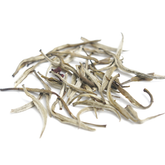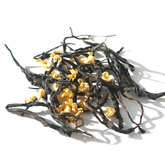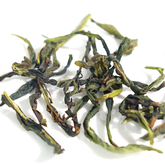Is It Ok To Make Tea In Metal Container?|NPTEA
In the world of tea culture, there is a wide variety of tea ware, made from many different materials. From traditional Chinese Yixing clay teapots to modern stainless steel teapots, each type of tea ware has unique characteristics and uses. However, as modern metal tea ware becomes increasingly popular, many tea enthusiasts start to wonder: does brewing tea in metal affect its flavor and health benefits? This question is especially common among beginner tea drinkers, who may feel overwhelmed by the numerous choices of tea ware and are unsure of what to select. As a Chinese Tea Artist for many years, I have used most of the tea sets and have tested their differences.This article will analyze the use of metal tea ware from various perspectives to help you make the best choice.
Common Metal Tea Ware
Metal tea ware is widely used in different countries and regions. Here are some common types of metal tea ware:
-
Stainless Steel Tea Ware: Stainless steel is a modern, commonly used metal material known for its corrosion resistance, heat resistance, and durability. It is also relatively easy to clean. Many Western countries and modern households choose to use stainless steel teapots and teacups to brew tea. However, it is important to note that low-quality tea ware may contain a heavy metal called "chromium." Chromium is used in stainless steel and other products due to its hardness, brittleness, and corrosion resistance. When the tea ware is damaged or corroded, it can release this substance. Long-term consumption of trivalent chromium can damage the body’s antioxidant system, leading to chronic oxidative diseases such as diabetes and hypertension.

-
Copper Tea Pots: Copper has excellent thermal conductivity and heat retention, making copper teapots popular in some cultures. Copper teapots are often used to brew certain types of tea, such as Pu-erh tea and black tea, because they can heat the tea leaves evenly. However, they require careful maintenance to prevent the formation of verdigris (copper oxidation), which can be harmful to the body if left unchecked. Regular cleaning and maintenance can avoid this problem.

-
Silver Tea Ware: Silver teapots are known for their ability to purify water by releasing silver ions, which are believed to improve the taste of the water and enhance the flavor of tea. Silver ions have antibacterial properties and generally do not pose a health risk. In fact, they may be beneficial due to the purification of water.

-
Iron Tea Pots: Iron tea pots are also used in Japan and some regions of China. They are excellent at retaining heat, but their effect on tea can be unique. Long-term use of an iron teapot may result in a more robust tea flavor, and the tea may even have a slight iron taste.
Disadvantages of Metal Tea Ware for Brewing Tea
-
Impact on Flavor: Different materials for tea ware can affect the flavor of the tea. Metal tea ware (such as stainless steel and copper) tends to heat the water more quickly due to its high thermal conductivity, which helps release more of the compounds from the tea leaves. However, metal materials may react with certain chemical compounds in the tea, especially in acidic teas, which could alter the taste. For example, copper and iron teapots may impart a metallic flavor to the tea, especially if the teapot has not been properly maintained or has been used for a long time.
-
Health Implications: Whether metal tea ware impacts health depends on the type of metal and the quality of the tea ware. High-quality stainless steel and silver tea ware generally do not pose significant health risks, as these materials are stable and will not react negatively with the compounds in tea. However, lower-quality metal materials (such as untreated copper or iron teapots) may contain harmful metal elements that could affect health if used for prolonged periods. For example, copper teapots may release small amounts of copper ions, which could be harmful if consumed in excess.
-
Potential Risks: The main risks of using metal tea ware include the release of metal ions and improper cleaning and maintenance. Especially when the tea ware is used for long periods without proper cleaning or if it becomes damaged, metal components may leach into the tea, affecting its quality. To avoid these risks, it is recommended to choose high-quality metal tea ware and regularly clean and inspect it.
-
Cleaning and Maintenance: Metal tea ware, particularly copper teapots, tends to oxidize or rust easily. Cleaning can be more difficult, and regular maintenance is required to preserve its appearance and functionality.
-
Aesthetic and Experience: Metal tea ware may not enhance the tea-drinking aesthetic and experience as much as ceramics or Yixing clay teapots. Transparent or textured tea ware allows the color of the tea liquor to become part of the tea appreciation experience, which is difficult to achieve with metal tea ware. This is particularly true when brewing green tea, where glass tea ware provides the best visual display of the leaves.
Recommended Tea Ware
In Chinese tea culture, the white porcelain gaiwan is the most commonly used tea brewing tool. A gaiwan made of porcelain or ceramic is known for its excellent heat retention and stability, and it does not react with the tea, allowing the natural flavors of the tea to be preserved. Chinese tea brewing emphasizes controlling temperature and water quality, and using a gaiwan can help manage these factors and prevent bitterness in the tea. We highly recommend using the traditional Chinese gaiwan for brewing tea and using high-quality stainless steel products for boiling water.

While metal tea ware has some unique advantages, it can affect the flavor and health benefits of tea. As a result, metal tea ware is less commonly used in traditional Chinese tea culture. Most tea drinkers still prefer using ceramic, porcelain, or other non-metal materials, especially when tasting high-quality teas, to avoid the metallic taste from interfering with the tea's original flavor.
Conclusion
Metal tea ware is widely used around the world due to its durability, ease of cleaning, and excellent heat conductivity. However, when brewing tea, the potential impact on the flavor, quality, and health of the tea should not be overlooked. If you prioritize flavor and health, it is recommended to choose ceramic, porcelain, or other non-metal materials for tea ware, especially when brewing traditional Chinese teas, to avoid interference from metallic tastes. If you do choose metal tea ware, be sure to select high-quality materials and maintain and clean them regularly to ensure the safety and taste of your tea.
SEE MORE CHINESE TEAS
If you have questions about selecting tea:
Learn-more-about-chinese-tea
If you have questions about the benefits of tea:
Health-benefits-of-chinese-tea
If you have questions about brewing tea:
How-to-brew-loose-leaf-tea






